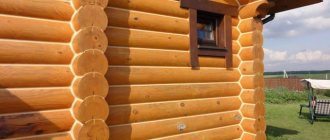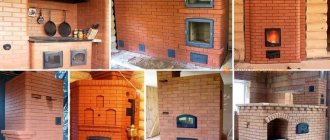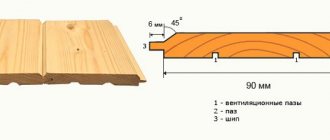Wood impregnations penetrate deeply into the structure of the material, creating a thin film on its surface. At the same time, they do not disrupt natural vapor exchange and do not interfere with the evaporation of moisture. Moreover, the use of impregnations allows you to extend the service life of wooden structures several times.
Impregnations for interior work can protect wood from mold, mildew, increase its fire resistance, etc. The market offers a wide range of impregnations for interior work. Let's understand the advantages and features of each composition.
Kinds
Impregnations differ not only in their protective properties and purpose, but also in their composition. When choosing a solution, it is important to consider the scope of its application, as well as carefully study the composition.
Despite the fact that wooden structures located indoors require less aggressive protection, nevertheless, you should not skimp on the choice of impregnations.
Water
Such impregnations are already ready for application.
According to their properties they are divided into:
- Fireproof.
- Decorative.
- Moisture resistant.
- Antiseptic, etc.
Such solutions do not have a pungent odor, which allows them to be used in almost any room. Apply water-based impregnations only to damp surfaces. The active components quickly penetrate deep into the material and dry. For application, you can use a regular brush.
Water-based impregnations are not recommended for the protection of old wood and lumber. Otherwise, the structure may swell and crack.
Acrylic
They have a safe composition and adhere well to the surface.
They have the following properties:
- Protect wood from moisture.
- Do not interfere with natural steam exchange.
- Protect the material from rotting, mold, and mildew.
Acrylic impregnations can be applied at any stage of construction. The solutions do not emit chemical compounds and do not have an unpleasant odor.
Acrylic-based impregnations do not withstand low temperatures. Therefore, they are used only inside heated rooms.
Salt
Sold in powder or ready-made solution.
Such impregnations have the following properties:
- Protects against mold and mildew.
- Strengthens fire-fighting properties.
- They do not have an unpleasant odor.
It should be noted that salt impregnations are rarely used at home. To achieve maximum protection, the wood must be kept in the solution for a certain time. Regular brush application is not effective.
Expert opinion
Torsunov Pavel Maksimovich
Important! Impregnations based on mineral salts have a negative effect on metal parts. Take this feature into account when choosing this solution.
Wax
In addition to its protective properties, wax-based impregnations improve the appearance of wood, emphasizing its beauty and natural pattern.
Such compositions have the following characteristics:
- Repel water.
- Protects against mold, mildew and insects.
- They have a safe composition.
Wax compositions are convenient to apply with a regular brush. Due to the absence of an unpleasant odor, they can be used in any room.
Important! Wax-based impregnations have a short shelf life. That is why protection needs to be updated in a timely manner.
Oily
Such impregnations have a safe and environmentally friendly composition. They do not have an unpleasant odor, they are well distributed with a regular brush.
Their advantages include:
- High water-repellent properties.
- Gives the surface a shiny appearance.
- Masking of minor defects.
- Increasing the service life of wood.
After drying, a thin film forms on the wood, which prevents dust from settling. Oil-based impregnations are an excellent solution for rooms with high humidity. It is best to give preference to solutions based on linseed oil.
Oil impregnations do not provide a durable coating. You need to update your protection every year! Also, remember that the solution is flammable, so it must be stored away from sources of heat and flame.
Alkyd
They have excellent protective properties.
They increase wood’s resistance to the following negative factors:
- Rotting.
- Getting wet.
- Fungus and mold.
The impregnation is well applied to the surface, but at the same time it dries for quite a long time. It is used for processing any wooden structures, boards, veneer, plywood, lumber, etc. Can be used on both fresh and old wood.
Silicone
Usually presented on the market in the form of concentrates, which must be diluted with water before use.
Such impregnations have the following characteristics:
- Does not create a film on the surface.
- Protect from moisture, fungus, mold, insects, etc.
- Can be applied under painting.
Silicone solutions can be applied in any way: roller, brush, spray, etc.
Veres Classic Lazura
The population of Russia is returning to the traditional construction of bathhouses on their plots. A real Russian bathhouse is a wooden structure that requires both external and internal treatment with antiseptics. Veres Classic Lazura is one of the best means for internal protection of a bathhouse from constant exposure to humidity and temperature changes. It can be used to treat floors, ceilings, walls and shelves, which will be protected by this composition for 8 years.
The best impregnations
The market offers a huge range of impregnations from different manufacturers. They all have their pros and cons. In order not to make a mistake with your choice, it is important to have an idea of the qualities of each option.
Pinotex Interior
Water-based impregnation, ideal for interior work. The composition is well applied to the surface and does not create smudges. The final coating is matte. Perfectly hides minor imperfections.
The impregnation does not have an unpleasant odor, it dries quickly and emphasizes the texture of the wood. The manufacturer's catalog presents a large assortment of solutions in different shades, which allows you to choose an option for any interior.
Ecohouse
Inexpensive domestic impregnation with a safe composition. After applying the solution, a “breathable” film is formed on the surface, which reliably protects against fungi, mold and insects.
The only drawback of Ecodom impregnation is the long drying period and an unpleasant odor, which subsequently disappears.
NEOMID 430 ECO
This is an aqueous solution with antiseptic properties. This impregnation is suitable for use in rooms with high humidity, for example, in a bathhouse or sauna, as well as high performance characteristics. The solution does not need regular updating, and the protection period can reach 35 years.
This impregnation has an unpleasant odor and can stain the wood greenish.
Tikkurila Supi Saunasuoja
Acrylic impregnation from a Finnish manufacturer. Has high protective properties. Prevents rotting, the development of fungus, mold, and also protects against moisture. Creates a thin film on the surface that repels dust and dirt.
Senezh Ecobio
Impregnation from a Russian manufacturer, designed to protect wood from:
- Rotting.
- Formation of fungus and mold.
- Impact of insects, etc.
The product has excellent antiseptic characteristics and does not have an unpleasant odor. It can be applied under any paint and varnish materials. The service life of the protective coating is 30-35 years.
Senezh Ultra
Impregnation with antiseptic properties. Protects the tree from pathogenic flora, insects and premature destruction for up to 35 years. Can be used for painting. The mixture can be applied with a roller, brush or spray.
This antiseptic is not applied to surfaces that have previously been treated with varnish, paint or other film-forming solutions.
Properties of fire retardant varnish
There are different types of impregnations. For example, a fire-retardant antiseptic combines fire protection, characteristic only of this type of antiseptic, and other types of protection characteristic of other impregnations. The purpose remains the same - decorative application.
Fireproof impregnation is used in several cases:
- external treatment of wooden structures;
- covering furniture and floors.
Let's consider the main points when working with a fire-resistant antiseptic.
- Impregnation can be applied to a painted surface. But if water-based paint was applied, then it will be pointless.
- This type of antiseptic must be applied at temperatures from +5 and above.
- If you treat the wood after applying the impregnation, the protection against fire will be stronger.
Important! Most often there are two types of impregnations - semi-matte and matte.
How to prepare wood?
High-quality preparation of wooden surfaces is necessary to fully reveal the protective properties. A lot depends on the type of impregnation and the type of product.
However, the whole process can be divided into several stages:
Grinding
The purpose of sanding is to open the pores of the wood. Thus, the composition penetrates into the deep layers of the material.
Degreasing
The wood must be clean, without resin stains. For this purpose, you can use special compounds.
Drying
If the wood is wet, it needs to be dried well in natural conditions.
Application Features
When the surface is ready, you can begin applying impregnation.
It is important to remember a few simple rules:
- If there is a lot of work, do not forget to stir the impregnation in the jar from time to time. This way you will avoid sedimentation and get a uniform color in the end.
- Apply impregnation in one direction, moving from one edge of the product to the other. There is no need to paint the product in different places at the same time, making chaotic movements. As a result, you will get uneven color and smudges.
- Allow the first coat to dry before applying the second coat. This takes 1-3 hours depending on the composition of the solution. If you plan to apply 2-3 layers of impregnation, it is important to allow drying time between each approach.
- If after drying you decide to varnish the product, choose a solution with a similar composition. For example, if you used oil impregnation, then the varnish should be oil-based, if water-based, then the varnish should be water-based.
Important! Before use, read the instructions for use of a specific impregnation. It necessarily prescribes the method of applying the composition.
High-quality impregnation creates reliable protection for wooden structures from any negative factors. When choosing a composition for interior work, be sure to ensure its safety. Give preference to trusted brands and manufacturers.
Additional Information
The need for complex wood processing must be adequate to protect against many factors, and ensure safety and security from the main destroyers. The main purpose of applying wood impregnation for interior work is its antiseptic, fire-resistant, moisture-proof and biologically invulnerable properties.
An antiseptic for external work is no less necessary than other protective properties, therefore, both complex and structural methods are taken into account when applying impregnation.
The service life of a wooden building can be significantly extended if you choose the right products, apply them in the required sequence and follow the prescribed technologies.
Recently, wood impregnation, which has long been used in Europe, has become widespread, the essence of which is the impregnation of wood with protective compounds in an autoclave to a depth of 2 cm. The use of wood impregnation for deeper impregnation of the outer layer requires preliminary preparation, drying and final structural completion of the product.
Impregnating wood has its advantages, as do the usual methods of soaking the wood in a bath with a solution, applying with a roller, brush or spray.
Question answer
What wood impregnation can be used in the bedroom?
It all depends on what protective properties you want to achieve. For the bedroom, you can use water- or oil-based impregnations. They are completely safe for health. In addition, oil solutions have good decorative properties.
How do you know when it’s time to update your impregnation?
This can be understood by the appearance of the surface: the protective film will begin to crack, peel, and move away from the base. In addition, each can of impregnation indicates its protection period.
How to apply impregnation to the surface?
It all depends on the type of impregnation and its composition. In most cases, solutions can be applied with a regular brush, spray gun or roller. The exception is salt impregnations. The product must be soaked in them.
Can impregnations for outdoor use be used indoors?
In most cases, impregnations for outdoor use have a more aggressive composition and toxicity. The use of such solutions inside residential premises is unacceptable. However, you can choose a universal composition that is suitable for use both inside and outside the home.
What types of wood products can be treated with impregnations?
Impregnations can be used to protect any wooden surfaces: walls, ceilings, railings, furniture, picture frames, etc.
The difficult problem of choice
What is the best impregnation to choose? This is a question that requires a professional approach and a clear understanding of the tasks facing a person. A huge selection of water-soluble compounds, oil pastes, volatile mixtures and other types baffles the uninitiated. What should be highlighted in the first place is not the question of what color - colorless, white or black impregnation, but its quality and efficiency.
So which wood impregnation is best? If the deck varnish is for a wooden floor, then it is Finnish, and the antiseptic is of high quality to protect the wood from gray-shaggy or black mold. The choice of impregnation should be carried out with a professional approach, and for this it is always better to consult with specialists.
Review of Pinotex decorative impregnation (1 video)
Different types of impregnations (24 photos)
Classification
There is a classification of such means, knowledge of which helps to understand which option should be chosen for a particular situation. The following types of products are distinguished:
- For internal processing, they must be harmless to the body;
- For external coatings, they must be resistant to pests, as well as ultraviolet radiation;
- Water-based, which are most often used for application indoors due to their safety for human health;
- Oil-based, they have an unpleasant odor, so they are applied outside the building, but are environmentally friendly;
- With a wax base;
- Contains solvents.
For external coatings, they must be resistant to pests, as well as ultraviolet radiation.
Vegetable oils
You can use vegetable oils for impregnation - flaxseed and hemp. It is important to understand that they will change the color of the surface. The wood will “breathe” and retain its properties. To give the composition the best qualities, it is recommended to add burdock, elecampane, galangal or angelica root to flaxseed oil.
The wood will “breathe” and retain its properties.
General rules for application and processing
To obtain an even distribution of the composition, the application itself should be carried out correctly. Experts recommend adhering to the following operating rules:
- If liquid antiseptics are made, then spray with a spray gun; for thicker ones, choose brushes, rollers, or a sponge;
- For safety, the master must wear a respirator and protective clothing, gloves;
- Good ventilation is created inside the room.
For safety, the master must wear a respirator and protective clothing and gloves.
It is possible to make an antiseptic for wood yourself. The main thing is to decide on the components and carry out the process in compliance with safety measures. This is an economical option if large areas will be impregnated.
Other recipes
You can also prepare other types of antiseptic wood impregnations. For example, liquid glass in an amount of 1.4 liters is mixed with chalk and talc (they are taken in 200 grams each). The flammability of the material can be reduced by means of boric acid (take 4 grams), ammonium hydrogen orthophosphate (40 grams), and water - 400 mm.
You can also prepare other types of antiseptic wood impregnations.
Antiseptic basis
The composition of wood antiseptic may include different components, but the most popular ingredients used in recipes are those described below:
- Copper/iron sulfate;
- Iodine;
- Zelenka;
- Bitumen;
- Silicon/sodium fluoride;
- Pastes with a clay base;
- Pastes with a biocidal base.
The composition of a wood antiseptic may include different components.











